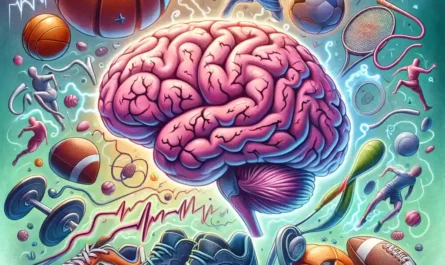Introduction
In the ongoing conversation about inclusivity and safety in school activities, one particular concern often arises: whether students with epilepsy should not participate in sports. This topic touches the hearts of parents, educators, and healthcare providers alike, as it intertwines with the broader goals of ensuring both the physical well-being and social inclusion of all students.
Understanding Epilepsy and Physical Activities
Epilepsy, a neurological condition marked by the tendency to have seizures, poses unique challenges in the context of physical activities and sports. The primary concern hinges on the balance between offering students a full, enriching school experience and safeguarding their health.
Risks Associated with Sports
The argument that students with epilepsy should not participate in sports is primarily rooted in safety concerns. Physical exertion, overheating, and dehydration, common facets of athletic activities, can potentially trigger seizures in some individuals. Moreover, the physical environment of certain sports poses a risk of injury should a seizure occur.
Creating a Safe Educational Environment
For educators and parents, the safety of students with epilepsy is paramount. While the goal is to include all students in every aspect of school life, the unique risks associated with sports participation necessitate careful consideration and, sometimes, difficult decisions.
- Safety First: The well-being of students should always be the primary concern. Sports that pose a high risk of injury during a seizure, such as swimming or climbing, might be too hazardous.
- Individual Assessments: Decisions about sports participation should be made on a case-by-case basis, considering the severity and frequency of the student’s seizures.
- Alternative Activities: Schools can offer alternative activities that allow students with epilepsy to engage in physical exercise in a safer, more controlled environment.
Balancing Safety and Inclusion
The recommendation that students with epilepsy should not participate in sports doesn’t come lightly. It’s about finding a balance that prioritizes health while still striving for inclusivity and participation in school life.
Fostering Understanding and Support
Educating the school community about epilepsy is crucial. Understanding the condition can foster a supportive environment where students feel valued and included, regardless of their participation in traditional sports.
The Path Forward
For students with epilepsy, navigating school activities requires collaboration, understanding, and sometimes, creative solutions. While the stance on sports participation is cautious, it opens the door to exploring new avenues for engagement and fulfillment.
This article aims to highlight the considerations and concerns surrounding sports participation for students with epilepsy, emphasizing the importance of safety and personalized decision-making. While it advocates for caution, it also encourages ongoing dialogue and collaboration to ensure that every student’s needs are met with empathy and understanding.
FAQs
- Why should students with epilepsy avoid participating in sports?
Students with epilepsy are advised to avoid sports due to the risk of seizures triggered by physical exertion, stress, or overheating, and the potential for injury during a seizure.
- Can any sports be considered safe for students with epilepsy?
Some low-impact and less physically demanding sports may be considered safer for students with epilepsy, especially with proper medical oversight and safety measures in place.
- What precautions should be taken if a student with epilepsy participates in sports?
Precautions include comprehensive medical evaluation, a personalized seizure action plan, appropriate safety gear, constant supervision, and educating coaches and teammates about epilepsy.
- Are there alternatives to traditional sports for students with epilepsy?
Yes, alternative activities such as yoga, walking, or non-contact team sports can provide safer options for physical activity and social participation.
- How can schools support students with epilepsy in physical education?
Schools can support students by facilitating individual assessments, offering alternative activities, ensuring all staff are trained in seizure first aid, and fostering an inclusive, supportive environment.
Disclaimer:
This content is for informational purposes only and not intended as medical advice. The accuracy or reliability of the information provided is not guaranteed. Consult a medical professional for advice and treatment tailored to individual needs. Reliance on any information in this article is strictly at your own risk.



